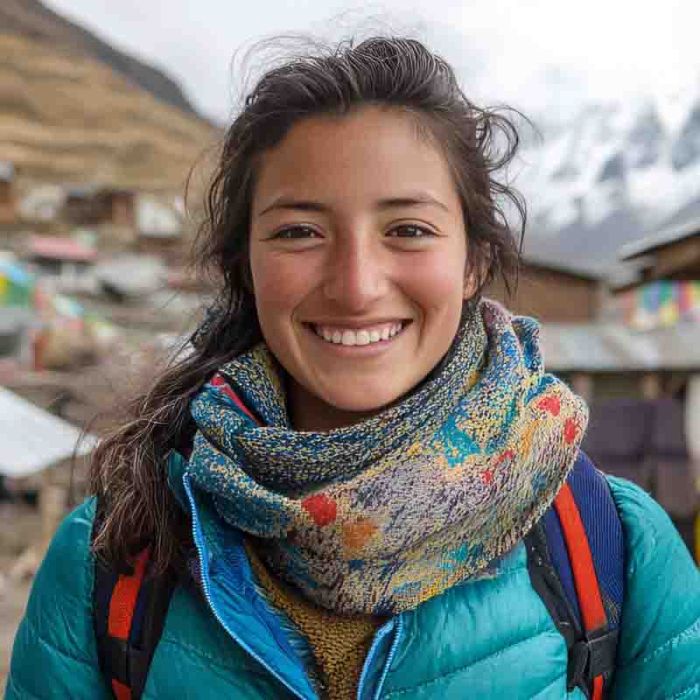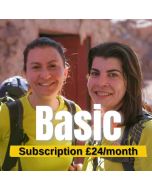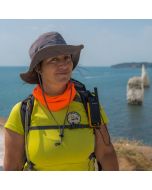Day 1: Arrival in Kathmandu
Upon arriving at Kathmandu Airport, complete your immigration procedures. Look out for our representative from Hiking in London Club, who will be waiting with a sign bearing your name. You will then be transferred to a 3-star hotel. Meals Included: B/B
Day 2: Kathmandu – Lukla [2,840m] – Phakding [2,652m]
Begin with an early flight from Kathmandu’s domestic terminal to Lukla (2,800m). This breathtaking 40-minute journey lands on the Tenzing-Hillary Airport runway. After meeting our trekking crew and organising gear, we start the short hike to Phakding. This gentle walk helps with acclimatisation. Meals Included: Breakfast, Lunch, Dinner
Day 3: Phakding – Namche Bazaar [3,440m]
Today’s trek follows a route of short ascents and descents, crossing the Dudh Koshi River multiple times. Enjoy marvellous views of Mt. Thamserku (6,608m) at Benkar village. After entering Sagarmatha National Park at Monjo, we descend to Jorsale before traversing the Hillary Suspension Bridge. A final uphill climb rewards us with superb views of Everest, Lhotse, Tawache, and other peaks before reaching Namche Bazaar, the main hub of the Khumbu region. Meals Included: B, L, D
Day 4: Acclimatisation Day at Namche Bazaar
We spend the day acclimatising. Health experts recommend staying active, so a day hike to Khumjung or a visit to the Sagarmatha National Park Visitor Centre is ideal. Namche Bazaar is a vibrant Sherpa town featuring shops, bakeries, and markets. Exploring a few hundred metres higher aids in acclimatisation before returning to the hotel. Meals Included: B, L, D
Day 5: Namche Bazaar – Tengboche [3,867m]
We ascend gently from Namche to Kyangjuma (3,550m), with views of Everest (8,848m), Lhotse (8,516m), Ama Dablam (6,856m), and more. From Kyangjuma, a forest trail leads to Sanasa, where one route goes towards Gokyo and another heads to Everest Base Camp. We descend steeply through pine and rhododendron forests to Phungi Thanga, then climb to Tengboche Monastery (3,867m). The sunset and sunrise panoramas here are unforgettable. Meals Included: B, L, D
Day 6: Tengboche – Dingboche [4,410m]
The trail descends through forests of birch and rhododendron, passing Deboche (3,820m) and crossing the Imja Khola. We then climb past carved mani stones to Pangboche (3,930m), continuing to Somare (4,010m) before reaching Dingboche (4,410m). Along the way, relish views of Everest, Lhotse, Nuptse, Ama Dablam, and other majestic peaks. Meals Included: B, L, D
Day 7: Acclimatisation Day at Dingboche (Hike to Nagarjung Peak)
Our second acclimatisation day involves a short yet steep hike to higher elevations, following the principle of “climb high, sleep low.” Many trekkers visit Nangkartshang Hermitage, but we may push on further to enjoy loftier views if conditions permit. Return to Dingboche to sleep. Meals Included: B, L, D
Day 8: Dingboche – Lobuche [4,910m]
We trek through farmland and meadows towards the Khumbu Glacier, reaching Dughla (4,620m). Afterwards, a steep climb to Dughla Pass (4,830m) reveals memorials to climbers. From here, we ascend gently to Lobuche (4,910m), with sweeping views of Ama Dablam, Pumori, and Nuptse. Meals Included: B, L, D
Day 9: Lobuche – Gorak Shep [5,140m] – Everest Base Camp [5,364m]
We make our way along the Khumbu Glacier’s lateral moraine before descending to Gorak Shep (5,140m). After an early lunch, we set off for Everest Base Camp (5,364m). Expect rough trails over glacier and moraine. Although Everest’s summit is not visible from Base Camp, the Khumbu Icefall is enthralling. We return to Gorak Shep for the night. Meals Included: B, L, D
Day 10: Hike to Kala Patthar [5,545m] – Return to Pheriche or Pangboche [4,260m]
We begin early with a steep climb to Kala Patthar, arriving in time for sunrise views of Everest, Lhotse, Nuptse, and more. After savouring the 360° Himalayan panorama, we head back down to Gorak Shep for breakfast, then retrace our steps through Lobuche and Dughla before continuing to Pheriche or Pangboche (4,260m). Meals Included: B, L, D
Day 11: Pheriche or Pangboche – Namche Bazaar [3,440m]
We descend through Sherpa villages, enjoying final glimpses of Everest and the surrounding peaks. The return path includes short ascents, but by late afternoon we arrive in Namche Bazaar. This evening is yours to rest or explore. Meals Included: B, L, D
Day 12: Namche – Lukla [2,800m]
After breakfast, we cross the Hillary Suspension Bridge again and trek through local settlements. Once we reach Lukla, it is time to celebrate our achievement with our trekking team. This is our final night in the Everest region. Meals Included: B, L, D
Day 13: Fly Lukla – Ramechhap or Kathmandu
An early flight brings us back to civilisation. We transfer you to your hotel in Kathmandu, where you can rest or enjoy the city. In the evening, we gather for a farewell dinner at a top Nepali restaurant. Meals Included: B/B & Farewell Dinner
Day 14: Fly Home – Farewell to Nepal
Your Himalayan journey concludes. Approximately three hours before your scheduled flight, a representative from Hiking in London Club will escort you to the airport. We trust you have enjoyed this unforgettable experience and hope to see you again in the Himalayas.
![]()







